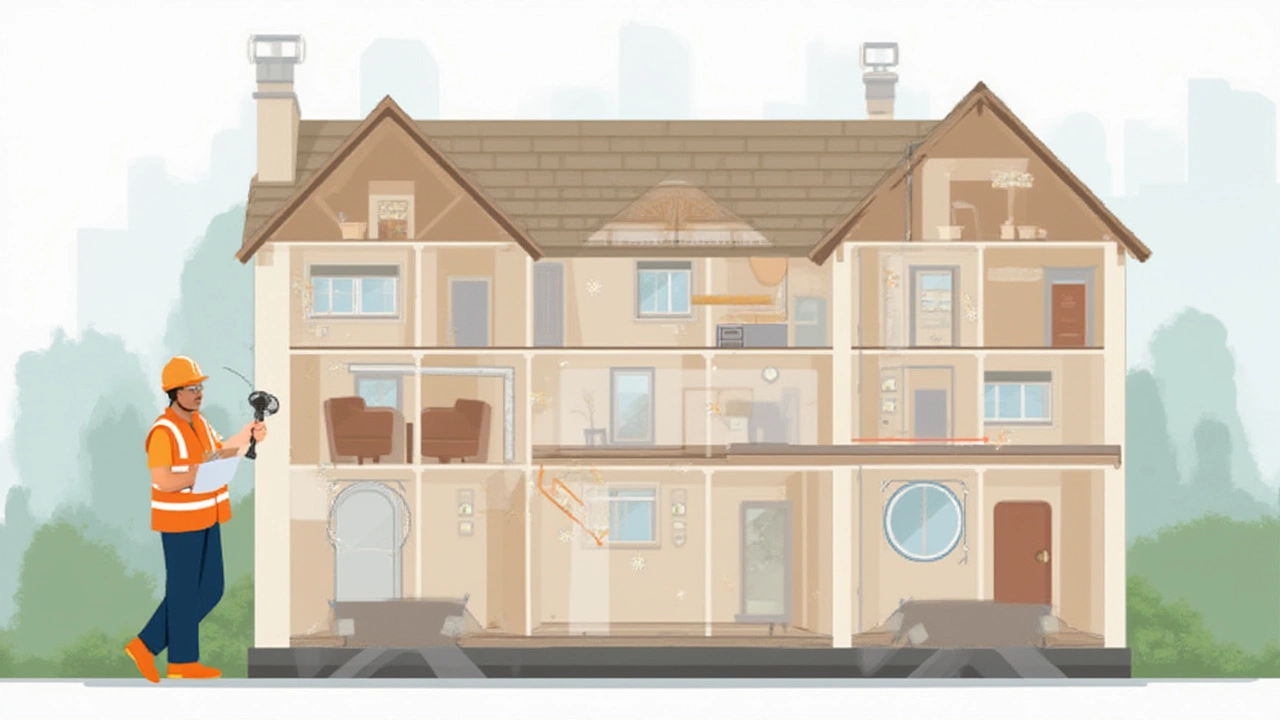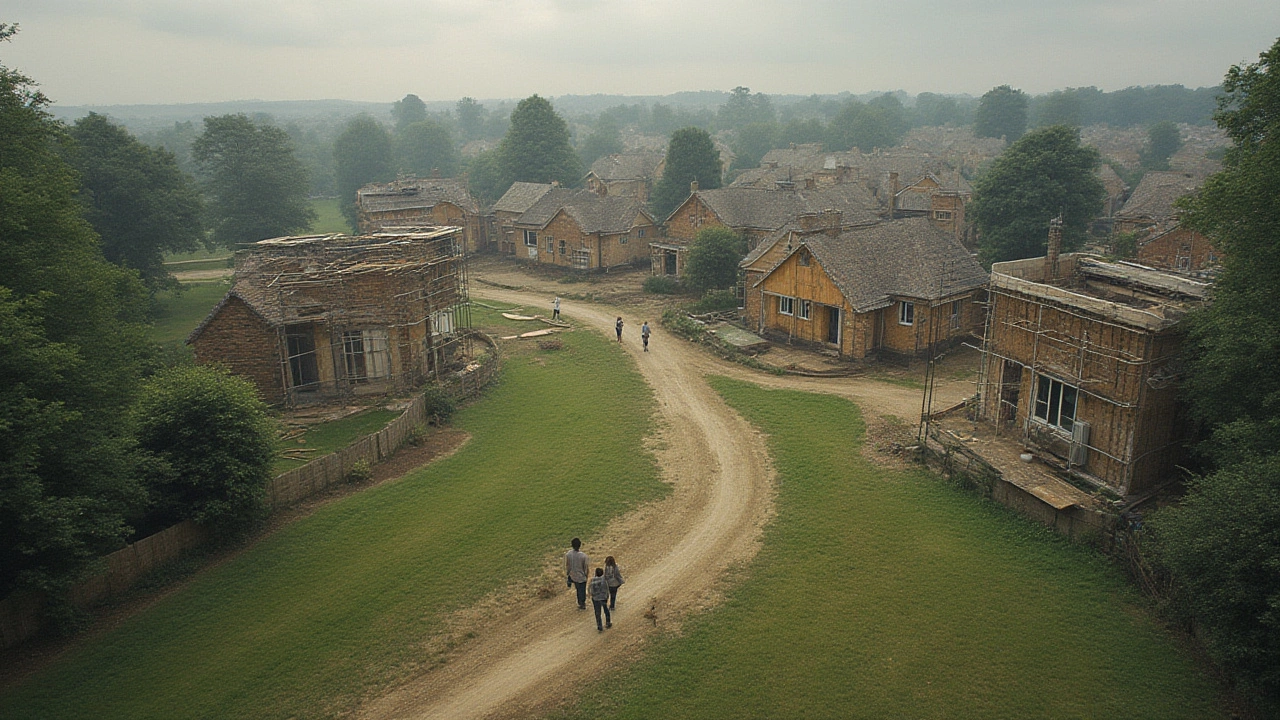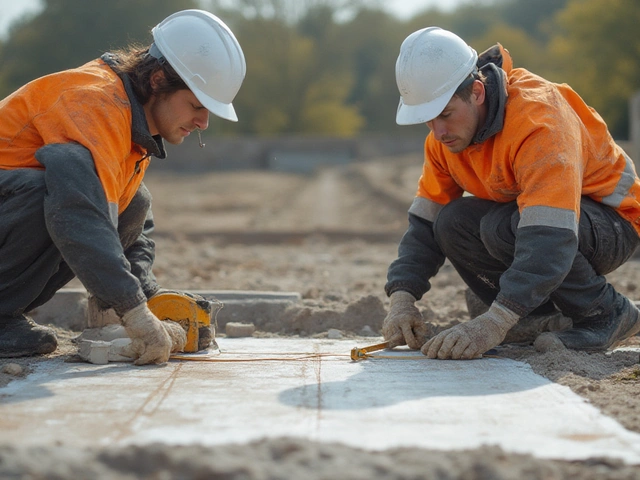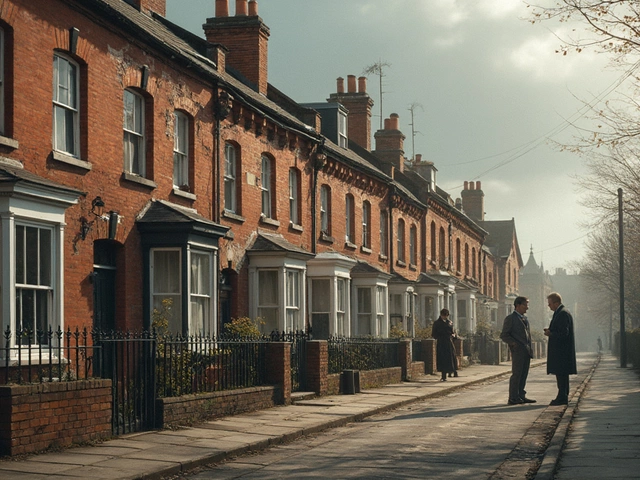Ever bought a brand-new house and noticed little cracks creeping along the walls after a few months? Or maybe you’ve walked into your freshly built office, heard a faint creak underfoot, and thought—wait, is my building already moving? It’s not just you. Buildings settle, and honestly, some movement is just part of the deal. But what’s “normal,” and when does it stop? Somehow, nobody talks about what’s really going on under the surface once the builders leave and the keys change hands.
Why Do New Buildings Settle?
Let’s demystify the whole building settlement thing. Settling is simply the slow movement of a building as it adjusts to its final weight on the ground. When a structure goes up, the foundations push down on the earth, squeezing out air pockets, shifting a bit of moisture, and making the soil more compact. It’s like when you stand on fresh snow—your boots sink in a little until things feel steady. With houses and commercial buildings, that “sinking” is usually measured in millimeters, not inches, but it can still bring some drama.
Why does this happen? There are a few major culprits:
- Soil type: Clay-rich soil, like what you’ll find in patches all over the UK, the US, and Australia, loves to expand and shrink with moisture. Sandy or rocky soil tends to be way more stable, but still isn’t immune.
- Foundation design: A shallow foundation might see more noticeable early settling than deeper piles bored into firmer layers. Engineers always try to match the foundation to the soil type, but perfection is tough—especially if the ground’s mixed or has been filled in the past.
- Construction techniques: How well the ground was prepped before pouring concrete makes a real difference. Builders who rush site grading, or skimp on proper compaction, invite trouble.
- Water and drainage: Leaky pipes, poor drainage, or sudden floods can undermine any foundation. Wet soil loses strength fast—it’s like trying to stand on a muddy patch after heading out in the rain with Sawyer last winter. Not my best idea.
The nerdy stuff actually matters. Back in a 2023 study by RICS (Royal Institution of Chartered Surveyors), around 23% of new homes in some regions developed hairline cracks in their first 18 months—most traced back to shifting soils or fast construction schedules.
How Long Does Building Settlement Last?
So, how long does it actually take for a new building to settle? Here’s the no-nonsense answer: most standard residential homes and commercial low-rises settle actively in the first 1–2 years. The bulk of movement happens during this period, and it usually slows down a lot by year three. High-rises and big commercial developments? Add another year or two, just to be on the safe side. (That’s if everything goes right—bad luck or surprise soil drama can stretch this timeline.)
Want detail? Check out this rough guide:
| Building Type | Main Settlement Period | Typical Observations |
|---|---|---|
| Detached Home | 1-2 years | Fine wall cracks, minor door sticking |
| Townhouse/Row House | 1-2 years | Minor cracks at joins |
| Medium Commercial (3–7 floors) | 2-3 years | Ceiling tile gaps, window sticking |
| High-rise (10+ floors) | 3-5 years | Façade joint movement, elevator track tweaks |
What about timber-frame vs concrete? Timber tends to settle a bit quicker, sometimes within the first year, but often with gentler, less disruptive movement. Concrete and steel, especially with deep pile foundations, mean a longer, steadier process.
One myth to bust: true “settling” is typically done within five years for most modern buildings. If your new home is still shifting noticeably after that, or if big cracks suddenly show up, that’s a red flag. Think more like subsidence or structural issues, which need a pro’s eye.

What Are the Signs of Normal Settling?
So, what’s normal vs panic-inducing when it comes to your new property’s quirks? Expect these during the first one to three years:
- Tiny hairline cracks (<3mm) popping up around doors, windows, or drywall joins. These are mostly cosmetic. You’ll even spot them in places builders patched up before handing you the keys.
- Doors or windows on the ground floor that suddenly stick or swing open. When Sawyer first tried to slam his bedroom door in our new place, the frame shift nearly took out his fingers.
- Creaks or groans from the floorboards, especially after heavy rain or a cold snap. Expanding and contracting wood does this—nail-pops are a headache but rarely a major issue.
- Tiny gaps appearing where ceiling meets wall, or between skirting boards and the floor. Most of the time, flexible caulk or a little paint can sort this.
If you spot the following, something bigger could be brewing:
- Cracks wider than a pencil (5mm+), especially if they run diagonally or re-open after patching.
- Major sloping on floors—so a ball rolls clear across the living room.
- Doors and windows that absolutely refuse to close, even after adjusting hardware.
- Water stains or damp patches near foundations or on basement walls. This could mean foundation settlement mixed with water ingress.
Insurance companies and surveyors usually consider cracks under 5mm as "cosmetic." The big stuff? Log it, take photos, grab a ruler, and call a specialist—especially if you’re inside those vital first five years after construction.
Seasonal changes play a role. Many new homeowners freak out during their first “full cycle” of wet and dry weather. Don’t rush to repair small cracks until your building’s seen a summer and a winter—patching too early means re-doing it, sometimes twice. The National House Building Council (NHBC) in the UK even recommends waiting a full year before cosmetic corrections.
How to Minimize and Handle Settlement Issues
Knowing a little upfront goes a long way. Here are some hard-earned lessons, tips, and tricks to ease the process:
- Ask for a soil test before you buy or build. Not all plots are born equal. Some, like old riverbeds or land with deep clay deposits, make trouble later. Geotechnical reports cost money but can save a bundle in repairs.
- Check the foundations—with your eyes and your surveyor’s report. If you’re buying new, look for warranty guarantees or structural insurance that covers the initial settlement period. If it isn’t in writing, ask.
- Watch your landscaping. Heavy planting close to walls, overflow from downspouts, or raised beds that trap water against the foundation are all common mistakes. Last year, I had to move Sawyer’s favorite pumpkin patch because water was tracking right along the house wall. It wasn’t pretty, but the new grass survived.
- Keep an eye on humidity inside. Modern homes have tighter envelopes, which can trap moisture and encourage materials to expand and contract more dramatically. Use ventilation. Dehumidifiers in the first year can help new plaster, wood, and drywall “dry out” at a steady rate.
- Don’t rush in with major repairs. Wait for a full seasonal cycle before sorting cosmetic cracks, unless they’re big and clearly worsening. If you’re dealing with rental timelines or selling plans, show buyers maintenance records—they’ll appreciate honesty.
- Have a pro review serious or growing cracks. Not every crack means disaster, but spot checks by a structural engineer can save sleepless nights.
- Protect the site during the build. Insist that your builder keeps heavy equipment off the site as much as possible after the foundation’s done. Even small vibrations can shake loose soil or freshly-set slabs.
- If you notice changes after heavy rain, take note. Foundation settlement that speeds up after storms could point to drainage trouble outside—gutters and grading need to push water away from the walls.
The building settlement process is natural. On average, most homes “settle down” and become truly steady within those first few years. Don’t let early movement scare you off from a new build, but always keep records, take photos, and flag real concerns with your warranty company or builder promptly. There’s peace of mind in staying on top of things—and fewer wrecked doors along the way.
Takeaway: settling is almost always a short chapter, not a lifelong saga. If you keep a watchful eye and don’t panic at the first crack, your new place will soon feel rock-solid, creaks and all. And if your kid’s stuff starts rolling down their bedroom floor? That’s the time to pick up the phone, not just a tube of filler. Better safe than sorry.





